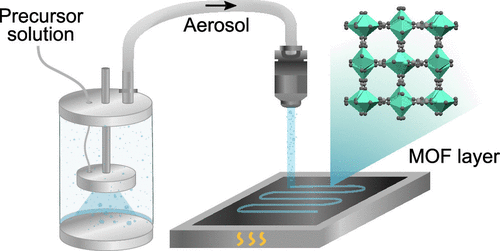First Direct Gravimetric Detection of Perfluorooctane Sulfonic Acid (PFOS) Water Contaminants, Combination with Electrical Measurements on the Same Device—Proof of Concepts
Authors: Ivanov, G.R.; Venelinov, T.; Marinov, Y.G.; Hadjichristov, G.B.; Terfort, A.; David, M.; Florescu, M.; Karakuş, S.
Journal: Chemosensors
Abstract:
Perfluoroalkyl and polyfluoroalkyl substances (PFAS) are pollutants of concern due to their long-term persistence in the environment and human health effects. Among them, perfluorooctane sulfonic acid (PFOS) is very ubiquitous and dangerous for health. Currently, the detection levels required by the legislation can be achieved only with expensive laboratory equipment. Hence, there is a need for portable, in-field, and possibly real-time detection. Optical and electrochemical transduction mechanisms are mainly used for the chemical sensors. Here, we report the first gravimetric detection of small-sized molecules like PFOS (MW 500) dissolved in water. A 100 MHz quartz crystal microbalance (QCM) measured at the third harmonic and an even more sensitive 434 MHz two-port surface acoustic wave (SAW) resonator with gold electrodes were used as transducers. The PFOS selective sensing layer was prepared from the metal organic framework (MOF) MIL-101(Cr). Its nano-sized thickness and structure were optimized using the discreet Langmuir–Blodgett (LB) film deposition method. This is the first time that LB multilayers from bulk MOFs have been prepared. The measured frequency downshifts of around 220 kHz per 1 µmol/L of PFOS, a SAW resonator-loaded QL-factor above 2000, and reaction times in the minutes’ range are highly promising for an in-field sensor reaching the water safety directives. Additionally, we use the micrometer-sized interdigitated electrodes of the SAW resonator to strongly enhance the electrochemical impedance spectroscopy (EIS) of the PFOS contamination. Thus, for the first time, we combine the ultra-sensitive gravimetry of small molecules in a water environment with electrical measurements on a single device. This combination provides additional sensor selectivity. Control tests against a bare resonator and two similar compounds prove the concept’s viability. All measurements were performed with pocket-sized tablet-powered devices, thus making the system highly portable and field-deployable. While here we focus on one of the emerging water contaminants, this concept with a different selective coating can be used for other new contaminants.






